Papers by PROF. EMMANUEL I F E A N Y I OBEAGU

The journal of maternal-fetal & neonatal medicine : the official journal of the European Association of Perinatal Medicine, the Federation of Asia and Oceania Perinatal Societies, the International Society of Perinatal Obstetricians, Jan 8, 2018
Neonatal sepsis is a major cause of mortality in the developing countries. However, with current ... more Neonatal sepsis is a major cause of mortality in the developing countries. However, with current severity scores and laboratory parameters, predicting outcomes of neonatal sepsis is a serious challenge. Red cell distribution width (RDW) is a readily available pragmatic means to predict outcomes of various comorbidities in adults and children, without causing any additional blood loss. However, its utility in neonates remains unexplored. Hence, the objective of the present study was to evaluate the association of RDW with neonatal sepsis and its role as a predictive marker for mortality. This Prospective observational study was carried out in a Level IIIB NICU for a period of 3 years. It involved comparison of RDW values of septic neonates with those of controls (matched for gestational age and birth weight) with an equal allocation ratio. A total of 251 septic neonates along with 251 controls >28 weeks of gestational age were enrolled. The RDW was derived from complete blood coun...
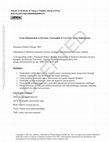
Annals of Medicine and Surgery, 2024
Cervical cancer, predominantly caused by high-risk human papillomavirus (HPV) infections,
continu... more Cervical cancer, predominantly caused by high-risk human papillomavirus (HPV) infections,
continues to be a major health challenge globally. Recent research has highlighted the significant
role of neutrophils, a type of white blood cell integral to the immune system, in the pathogenesis
of cervical cancer. This review examines the dualistic role of neutrophils in cervical cancer,
emphasizing their contribution to both inflammation and tumor progression. Understanding the
intricate relationship between neutrophils and cervical cancer could unveil new therapeutic
targets for better disease management. Neutrophils are key mediators of the immune response
and inflammation. In the context of cervical cancer, these cells are recruited to the tumor
microenvironment where they can adopt tumor-promoting phenotypes. Tumor-associated
neutrophils (TANs) facilitate various processes that aid tumor growth and metastasis, such as
producing reactive oxygen species (ROS) and proteases that induce DNA damage, releasing
cytokines and chemokines that promote angiogenesis, and forming neutrophil extracellular traps
(NETs) that enhance metastatic potential. Furthermore, TANs contribute to immune suppression
by inhibiting the activity of cytotoxic T lymphocytes and natural killer cells, allowing cancer
cells to evade immune surveillance. Given their pivotal role in cervical cancer progression,
neutrophils represent a promising target for novel therapeutic strategies. Approaches such as
inhibiting neutrophil recruitment to the tumor site, blocking NET formation, and modulating TAN phenotypes from pro-tumor to anti-tumor are being explored. These strategies aim to disrupt the supportive role of neutrophils in tumor development and progression, potentially
leading to improved outcomes for patients with cervical cancer.

International Journal of Medical Sciences and Pharma Research, 2024
Neonatal jaundice, characterized by elevated bilirubin levels in newborns, is a common condition ... more Neonatal jaundice, characterized by elevated bilirubin levels in newborns, is a common condition that can lead to severe complications like kernicterus if not managed effectively. Emerging evidence suggests that oxidative stress plays a critical role in the development of neonatal jaundice by exacerbating red blood cell breakdown and overwhelming the body's ability to process bilirubin. This review explores the potential of antioxidant supplementation as a therapeutic strategy for mitigating oxidative stress and preventing severe neonatal hyperbilirubinemia. The body's natural antioxidant defense systems, including enzymes like superoxide dismutase and non-enzymatic antioxidants like vitamins C and E, are often underdeveloped in newborns, particularly in preterm infants. This deficiency leaves them more vulnerable to oxidative damage, increasing the risk of jaundice. Antioxidants, which neutralize free radicals, may help reduce bilirubin levels and prevent the escalation of jaundice to dangerous levels.

International Journal of Medical Sciences and Pharma Research, 2024
Pregnancy-induced hypertension (PIH) is a significant complication of pregnancy, contributing to ... more Pregnancy-induced hypertension (PIH) is a significant complication of pregnancy, contributing to adverse maternal and fetal outcomes. Recent research has illuminated the role of oxidative stress in the pathogenesis of PIH, characterized by an imbalance between reactive oxygen species (ROS) production and antioxidant defenses. This review examines the mechanisms by which oxidative stress contributes to endothelial dysfunction, increased vascular resistance, and systemic inflammation in the context of PIH. By elucidating these mechanisms, the review highlights the critical need for effective strategies to mitigate oxidative stress during pregnancy. Antioxidants have emerged as potential therapeutic agents for managing oxidative stress and preventing PIH. Various antioxidants, including vitamins C and E, omega-3 fatty acids, and coenzyme Q10, have shown p.romise in reducing oxidative damage and improving vascular health during pregnancy. Clinical trials have suggested that supplementation with these antioxidants may enhance endothelial function and lower blood pressure in at-risk pregnant women, thereby decreasing the incidence of PIH and related complications.
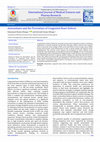
International Journal of Medical Sciences and Pharma Research, 2024
Congenital heart defects (CHDs) are among the most prevalent congenital anomalies, contributing s... more Congenital heart defects (CHDs) are among the most prevalent congenital anomalies, contributing significantly to neonatal morbidity and mortality. Emerging evidence indicates that oxidative stress is a key factor in the etiology of CHDs, as increased levels of reactive oxygen species (ROS) during critical periods of fetal development can lead to cellular damage and impaired cardiac morphogenesis. This narrative review explores the mechanisms by which oxidative stress contributes to the development of congenital heart defects and highlights the role of antioxidants in mitigating these effects. Antioxidants, including vitamins C and E, selenium, and coenzyme Q10, have demonstrated potential in reducing oxidative damage and supporting maternal and fetal health. Their ability to neutralize ROS can help protect developing cardiac tissues from oxidative injury, thereby promoting normal cardiac development. This review examines current research on the impact of antioxidant supplementation on pregnancy outcomes and its implications for preventing congenital heart defects.
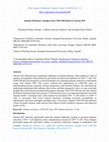
Elite Journal of Medicine, 2024
Chronic HIV infection poses significant challenges to immune function, often leading to a state o... more Chronic HIV infection poses significant challenges to immune function, often leading to a state of immune dysregulation characterized by persistent activation and depletion of CD4+ T cells. The CD4/CD8 ratio has emerged as a crucial biomarker for evaluating immune resilience in individuals living with chronic HIV. This review explores the implications of CD4/CD8 ratios in understanding immune responses, disease progression, and treatment efficacy. By examining the underlying mechanisms that influence these ratios and their prognostic value, we aim to provide insights that could inform personalized therapeutic strategies. The CD4/CD8 ratio not only reflects the balance between helper and cytotoxic T cells but also serves as an important indicator of overall immune health. A disrupted ratio, often marked by decreased CD4+ T cells relative to CD8+ T cells, is associated with worse clinical outcomes, including increased susceptibility to opportunistic infections and higher morbidity rates. Conversely, a higher CD4/CD8 ratio indicates a more favorable immune status and has been linked to better treatment responses and improved quality of life.

Elite Journal of Haematology, 2024
Human Immunodeficiency Virus (HIV) continues to be a formidable global health issue, necessitatin... more Human Immunodeficiency Virus (HIV) continues to be a formidable global health issue, necessitating an in-depth understanding of the immune response to enhance therapeutic outcomes. Central to this immune response are T lymphocytes, particularly CD4+ and CD8+ T cells, which play pivotal roles in orchestrating immune defense against HIV. The CD4/CD8 ratio has emerged as a crucial biomarker for assessing immune status, reflecting the balance between these two subsets and serving as an indicator of disease progression in HIV-infected individuals. A lower CD4/CD8 ratio is often associated with advanced disease, increased morbidity, and mortality, making it a vital measure in clinical practice. The intricate dynamics of the CD4/CD8 ratio are influenced by several factors, including HIV-induced immune activation, antiretroviral therapy (ART), immune aging, and comorbidities. Chronic immune activation resulting from HIV infection leads to CD4+ T cell depletion and CD8+ T cell expansion, further skewing the CD4/CD8 balance. Although ART significantly aids in restoring CD4+ T cell counts and improving the CD4/CD8 ratio, some individuals may continue to experience immune dysregulation, necessitating ongoing monitoring and innovative therapeutic approaches.

Elite Journal of Immunology, 2024
The CD4/CD8 T-cell ratio is a crucial immunological marker in understanding the immune response t... more The CD4/CD8 T-cell ratio is a crucial immunological marker in understanding the immune response to HIV infection and guiding therapeutic strategies. This review explores the significance of CD4/CD8 ratios in HIV defense mechanisms, highlighting their role in immune surveillance, disease progression, and treatment outcomes. It provides insights into the mechanisms that influence CD4/CD8 ratio changes during HIV infection, including viral dynamics and immune activation. By unpacking the complexities of CD4/CD8 dynamics, this article aims to offer a comprehensive understanding of how monitoring and managing this ratio can enhance immune resilience in HIV-infected individuals. Through a detailed analysis, this review emphasizes the importance of the CD4/CD8 ratio as a predictor of immune recovery and ART efficacy. Higher CD4/CD8 ratios are associated with better clinical outcomes, while persistently low ratios may indicate inadequate immune restoration despite effective viral suppression. The findings underscore the need for personalized medicine approaches that incorporate CD4/CD8 ratio monitoring, enabling healthcare providers to tailor treatment strategies to individual patient profiles and improve long-term health outcomes.

Elite Journal of Immunology, 2024
The CD4/CD8 ratio has emerged as a critical immunological marker in understanding the immune dyna... more The CD4/CD8 ratio has emerged as a critical immunological marker in understanding the immune dynamics of individuals living with HIV. This review explores the role of CD4+ T helper cells and CD8+ T cytotoxic cells in shaping immune responses against HIV, emphasizing how alterations in the CD4/CD8 ratio can influence disease progression and treatment outcomes. We discuss the mechanisms that contribute to the inversion of this ratio during HIV infection and its implications for immune recovery, particularly in the context of antiretroviral therapy (ART). In the chronic phase of HIV infection, a decline in CD4+ T cell counts often leads to an increased CD8+ T cell population, resulting in a low CD4/CD8 ratio that signals immune dysregulation and increased susceptibility to opportunistic infections. Regular monitoring of the CD4/CD8 ratio provides valuable insights into the immune status of HIV-infected individuals, guiding clinical decisionmaking regarding ART efficacy and the need for additional therapeutic interventions.
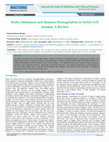
Journal of General Medicine and Clinical Practice, 2024
Sickle Cell Anemia (SCA) is a genetic disorder marked by the production of hemoglobin S (HbS), le... more Sickle Cell Anemia (SCA) is a genetic disorder marked by the production of hemoglobin S (HbS), leading to red blood cell sickling, hemolysis, and chronic oxidative stress. This oxidative stress creates a redox imbalance that profoundly affects cellular functions and contributes to the disease's pathology. This review examines the intricate relationship between redox imbalance and immune dysregulation in SCA, highlighting how increased oxidative stress impacts immune system function. Elevated levels of reactive oxygen species (ROS) and subsequent inflammatory responses disrupt normal immune processes, resulting in heightened susceptibility to infections and chronic inflammation. Oxidative stress in SCA arises from the breakdown of HbS during hemolysis, leading to the release of free hemoglobin and heme into the bloodstream. These components generate ROS and exacerbate cellular damage, contributing to systemic inflammation. The review explores how this oxidative environment impairs various immune cells, including neutrophils, macrophages, and lymphocytes, altering their functionality and promoting an inflammatory state. This immune dysregulation further compounds the clinical challenges of SCA, including increased infection rates and severe vaso-occlusive crises.
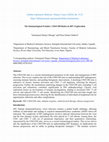
Lifeline Biochemistry, 2024
The CD4/CD8 ratio is a crucial immunological parameter in the study and management of HIV infecti... more The CD4/CD8 ratio is a crucial immunological parameter in the study and management of HIV infection. This review explores the role of the CD4/CD8 ratio in understanding HIV pathogenesis, assessing immune function, and guiding therapeutic interventions. A declining CD4/CD8 ratio is indicative of chronic immune activation and CD4+ T cell depletion, reflecting the disease's progression. Further, the mechanisms underlying changes in the CD4/CD8 ratio, including T cell activation and exhaustion, contribute significantly to HIV pathophysiology. Chronic viral replication fosters an environment of immune dysregulation, leading to increased CD8+ T cell activity and reduced CD4+ T cell counts. Monitoring the CD4/CD8 ratio provides insight into these immunological processes, allowing for the identification of individuals at heightened risk for opportunistic infections and other complications.
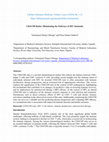
Lifeline Biochemistry, 2024
The CD4/CD8 ratio is a pivotal immunological marker that reflects the balance between CD4+ helper... more The CD4/CD8 ratio is a pivotal immunological marker that reflects the balance between CD4+ helper T cells and CD8+ cytotoxic T cells, providing crucial insights into the immune status of individuals infected with HIV. An inverted CD4/CD8 ratio is often associated with immune dysfunction, disease progression, and an increased risk of opportunistic infections. This review explores the significance of the CD4/CD8 ratio in the context of HIV pathogenesis, highlighting the mechanisms that contribute to its changes, its predictive value in assessing immune recovery, and its implications for antiretroviral therapy (ART) efficacy. In the context of HIV, an altered CD4/CD8 ratio is indicative of the immune system's response to viral infection and treatment. Mechanisms such as direct cytotoxic effects of HIV on CD4+ T cells and chronic immune activation contribute to the observed inversion of this ratio. Additionally, monitoring the CD4/CD8 ratio can serve as a valuable tool for predicting disease progression and evaluating ART efficacy, as a normalized ratio is associated with improved immune function and health outcomes.
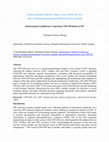
Lifeline Laboratory Medicine, 2024
The CD4/CD8 ratio serves as a crucial immunological marker in the context of HIV infection, refle... more The CD4/CD8 ratio serves as a crucial immunological marker in the context of HIV infection, reflecting the balance between CD4+ T-helper cells and CD8+ cytotoxic T-cells. A declining CD4/CD8 ratio indicates immune dysregulation, correlating with increased susceptibility to opportunistic infections and disease progression. This review explores the intricate relationship between CD4/CD8 ratios and HIV pathogenesis, highlighting the mechanisms that contribute to changes in this ratio and its implications for patient management. Furthermore, the CD4/CD8 ratio plays a pivotal role in predicting immune recovery in response to antiretroviral therapy (ART). Effective ART can restore CD4+ T-cell counts and improve the CD4/CD8 ratio, thereby enhancing overall immune function. Monitoring this ratio offers valuable insights for clinicians to assess treatment efficacy and make informed decisions regarding therapeutic interventions, ultimately improving health outcomes for individuals living with HIV.
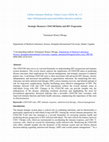
Lifeline Laboratory Medicine, 2024
The CD4/CD8 ratio serves as a pivotal biomarker in understanding HIV progression and immune syste... more The CD4/CD8 ratio serves as a pivotal biomarker in understanding HIV progression and immune system dynamics. This review article explores the significance of CD4/CD8 ratios in predicting disease outcomes, their implications for clinical management, and strategic measures to enhance patient care. A declining CD4/CD8 ratio is often associated with advanced HIV disease, chronic inflammation, and increased susceptibility to opportunistic infections. By monitoring this ratio, clinicians can tailor antiretroviral therapy (ART), assess immune recovery, and identify patients at risk for long-term complications, thereby facilitating more effective management of HIV. The interplay between CD4 and CD8 T-cell populations reflects the overall immune status in individuals living with HIV. Changes in the CD4/CD8 ratio can provide insights into the pathogenesis of the disease, informing treatment decisions and highlighting the need for personalized approaches. Research indicates that a favorable CD4/CD8 ratio correlates with improved immune function and better health outcomes, emphasizing the importance of this ratio in clinical practice.

Lifeline Immunology, 2024
The CD4/CD8 ratio has emerged as a vital biomarker for assessing immune resilience in individuals... more The CD4/CD8 ratio has emerged as a vital biomarker for assessing immune resilience in individuals living with HIV (PLWH). Traditionally, HIV management has centered on absolute CD4+ T-cell counts and viral load measurements to evaluate disease progression and treatment efficacy. However, the CD4/CD8 ratio provides a more nuanced understanding of immune function, capturing the balance between CD4+ T-helper and CD8+ cytotoxic T-cells. This review highlights the significance of the CD4/CD8 ratio as a predictor of immune resilience, detailing its role in immune recovery, chronic immune activation, and its implications for non-AIDS-related comorbidities. Research has demonstrated that a higher CD4/CD8 ratio correlates with improved immune recovery following antiretroviral therapy (ART), indicating better management of immune activation and inflammation. Conversely, a persistently low CD4/CD8 ratio despite effective viral suppression is associated with incomplete immune recovery and heightened vulnerability to chronic diseases. This ratio serves as a crucial marker for identifying patients at risk for non-AIDS-related complications, guiding clinicians in personalizing therapeutic strategies and interventions aimed at optimizing long-term health outcomes for PLWH.

Lifeline Immunology, 2024
The CD4/CD8 ratio is an important immunological marker in the management of HIV, offering a deepe... more The CD4/CD8 ratio is an important immunological marker in the management of HIV, offering a deeper understanding of immune function and disease progression beyond the CD4+ T-cell count. This ratio reflects the balance between CD4+ helper T-cells and CD8+ cytotoxic T-cells, with disruptions in the ratio indicating immune dysfunction and heightened immune activation. In HIVinfected individuals, the ratio often falls below 1, reflecting the depletion of CD4+ T-cells and the expansion of CD8+ T-cells, which is indicative of chronic immune activation and inflammation. Antiretroviral therapy (ART) plays a crucial role in restoring immune function by reducing viral load and promoting CD4+ T-cell recovery. However, even with virological suppression, not all patients experience a full restoration of the CD4/CD8 ratio. The ratio is increasingly recognized as a predictive biomarker for ART efficacy, non-AIDS comorbidities, and long-term health outcomes, such as cardiovascular disease and neurocognitive decline. A higher pre-ART CD4/CD8 ratio is often associated with better immune recovery and overall clinical prognosis.

Lifeline Health Sciences, 2024
Blood transfusions are critical components of care for individuals living with HIV, particularly ... more Blood transfusions are critical components of care for individuals living with HIV, particularly those with associated coagulation disorders such as thrombocytopenia and coagulopathy. These hematologic complications complicate clinical management, necessitating a tailored approach to transfusion practices. This review highlights the epidemiology of coagulation disorders in HIVpositive patients, examines the impact of these disorders on blood transfusion practices, and discusses strategies for optimizing patient outcomes through individualized transfusion protocols. Individuals with HIV are at an increased risk of developing coagulation disorders due to the effects of the virus itself, antiretroviral therapy, and co-infections. Thrombocytopenia, characterized by low platelet counts, is prevalent in this population and poses significant risks for bleeding.
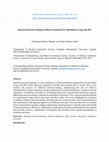
Lifeline Public Health, 2024
Informed decision-making is a vital component of blood transfusion management for individuals liv... more Informed decision-making is a vital component of blood transfusion management for individuals living with HIV, where balancing therapeutic benefits and potential risks is crucial. This review explores the process of informed decision-making, emphasizing the role of effective communication, patient education, and the incorporation of patient preferences. It underscores the importance of healthcare providers in facilitating discussions around blood transfusion options, addressing concerns related to transfusion-transmitted infections (TTIs), and ensuring that patients are empowered to make choices that align with their values. The review highlights key strategies to enhance informed decision-making, including the use of decision aids, clear communication of risks and benefits, and ongoing support from healthcare providers. Decision aids serve as valuable tools to help patients navigate complex information, allowing them to weigh the risks and benefits of blood transfusion effectively. Additionally, establishing a trusting relationship between patients and providers fosters a collaborative environment that promotes active patient participation in treatment decisions.

Lifeline Haematology, 2024
HIV-associated thrombocytopenia (HAT) is a significant hematological complication affecting indiv... more HIV-associated thrombocytopenia (HAT) is a significant hematological complication affecting individuals living with HIV, characterized by low platelet counts that increase the risk of bleeding and other complications. This review explores the epidemiology, pathophysiology, and clinical implications of HAT in the context of blood transfusion practices. As blood transfusions are often necessary for patients with HAT, understanding the associated risks and challenges is crucial for optimizing patient care and ensuring blood safety. The management of blood transfusion in HIVpositive patients with thrombocytopenia presents unique challenges. These include the need for careful assessment of platelet counts, the risk of transfusion-transmitted infections (TTIs), and the decision-making process regarding platelet transfusions. Patients with HAT require tailored transfusion strategies that consider their overall clinical picture, including viral load and immune status. Consequently, healthcare providers must strike a balance between providing necessary transfusion support and minimizing potential risks.

Lifeline Medicine, 2024
HIV (Human Immunodeficiency Virus) transmission through blood transfusions presents a significant... more HIV (Human Immunodeficiency Virus) transmission through blood transfusions presents a significant public health challenge, emphasizing the necessity for rigorous donor screening and blood safety protocols. This review examines the multifaceted approaches employed to ensure the safety of the blood supply, focusing on the critical role of donor screening practices, including medical history assessments, serological testing, and nucleic acid testing (NAT). The effectiveness of these methods in detecting HIV and minimizing transfusion-transmitted infections (TTIs) is discussed, highlighting the advancements in testing technologies that enhance blood safety. Despite the advancements in donor screening, challenges persist, including window periods during which an infected individual may not test positive, potential underreporting of risk behaviors due to stigma, and the emergence of new infectious diseases. These issues necessitate ongoing adaptation of donor screening practices and innovative solutions to maintain the integrity of the blood supply. Furthermore, the review explores the importance of emerging technologies, such as next-generation sequencing and automated screening systems, which hold promise for improving blood safety and increasing the efficiency of donor screening processes.

Uploads
Papers by PROF. EMMANUEL I F E A N Y I OBEAGU
continues to be a major health challenge globally. Recent research has highlighted the significant
role of neutrophils, a type of white blood cell integral to the immune system, in the pathogenesis
of cervical cancer. This review examines the dualistic role of neutrophils in cervical cancer,
emphasizing their contribution to both inflammation and tumor progression. Understanding the
intricate relationship between neutrophils and cervical cancer could unveil new therapeutic
targets for better disease management. Neutrophils are key mediators of the immune response
and inflammation. In the context of cervical cancer, these cells are recruited to the tumor
microenvironment where they can adopt tumor-promoting phenotypes. Tumor-associated
neutrophils (TANs) facilitate various processes that aid tumor growth and metastasis, such as
producing reactive oxygen species (ROS) and proteases that induce DNA damage, releasing
cytokines and chemokines that promote angiogenesis, and forming neutrophil extracellular traps
(NETs) that enhance metastatic potential. Furthermore, TANs contribute to immune suppression
by inhibiting the activity of cytotoxic T lymphocytes and natural killer cells, allowing cancer
cells to evade immune surveillance. Given their pivotal role in cervical cancer progression,
neutrophils represent a promising target for novel therapeutic strategies. Approaches such as
inhibiting neutrophil recruitment to the tumor site, blocking NET formation, and modulating TAN phenotypes from pro-tumor to anti-tumor are being explored. These strategies aim to disrupt the supportive role of neutrophils in tumor development and progression, potentially
leading to improved outcomes for patients with cervical cancer.
continues to be a major health challenge globally. Recent research has highlighted the significant
role of neutrophils, a type of white blood cell integral to the immune system, in the pathogenesis
of cervical cancer. This review examines the dualistic role of neutrophils in cervical cancer,
emphasizing their contribution to both inflammation and tumor progression. Understanding the
intricate relationship between neutrophils and cervical cancer could unveil new therapeutic
targets for better disease management. Neutrophils are key mediators of the immune response
and inflammation. In the context of cervical cancer, these cells are recruited to the tumor
microenvironment where they can adopt tumor-promoting phenotypes. Tumor-associated
neutrophils (TANs) facilitate various processes that aid tumor growth and metastasis, such as
producing reactive oxygen species (ROS) and proteases that induce DNA damage, releasing
cytokines and chemokines that promote angiogenesis, and forming neutrophil extracellular traps
(NETs) that enhance metastatic potential. Furthermore, TANs contribute to immune suppression
by inhibiting the activity of cytotoxic T lymphocytes and natural killer cells, allowing cancer
cells to evade immune surveillance. Given their pivotal role in cervical cancer progression,
neutrophils represent a promising target for novel therapeutic strategies. Approaches such as
inhibiting neutrophil recruitment to the tumor site, blocking NET formation, and modulating TAN phenotypes from pro-tumor to anti-tumor are being explored. These strategies aim to disrupt the supportive role of neutrophils in tumor development and progression, potentially
leading to improved outcomes for patients with cervical cancer.